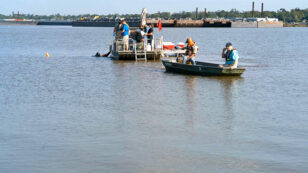
‘It’s Raining Plastic’: Researchers Find Microscopic Fibers in Colorado Rain Samples
By Brett Walton When Greg Wetherbee sat in front of the microscope recently, he was looking for fragments of metals or coal, particles that might indicate the source of airborne nitrogen pollution in Rocky Mountain National Park. What caught his eye, though, were the plastics. The U.S. Geological Survey researcher had collected rain samples from […]

 233k
233k  41k
41k  Subscribe
Subscribe 




